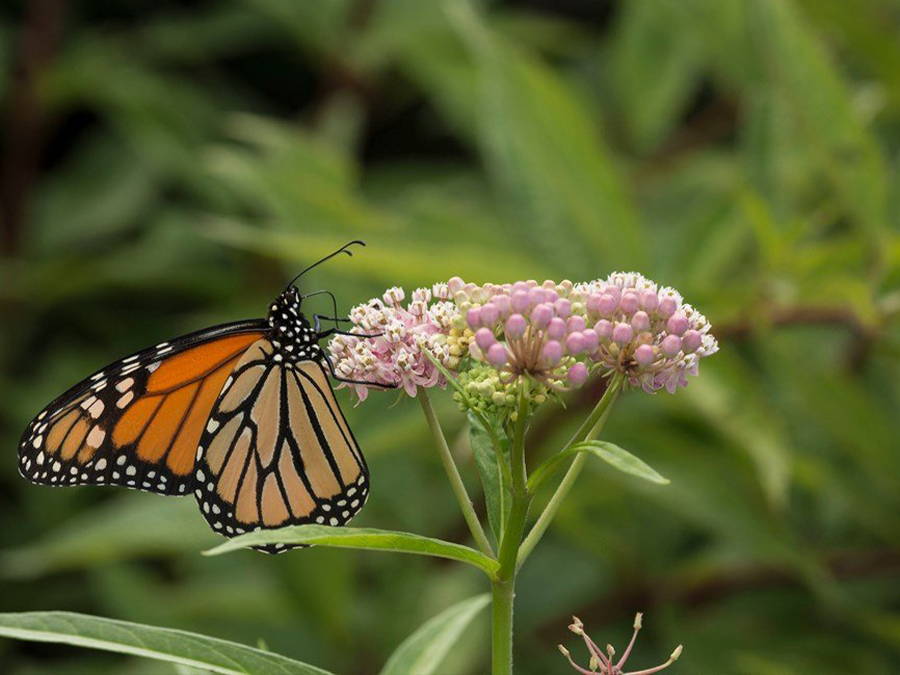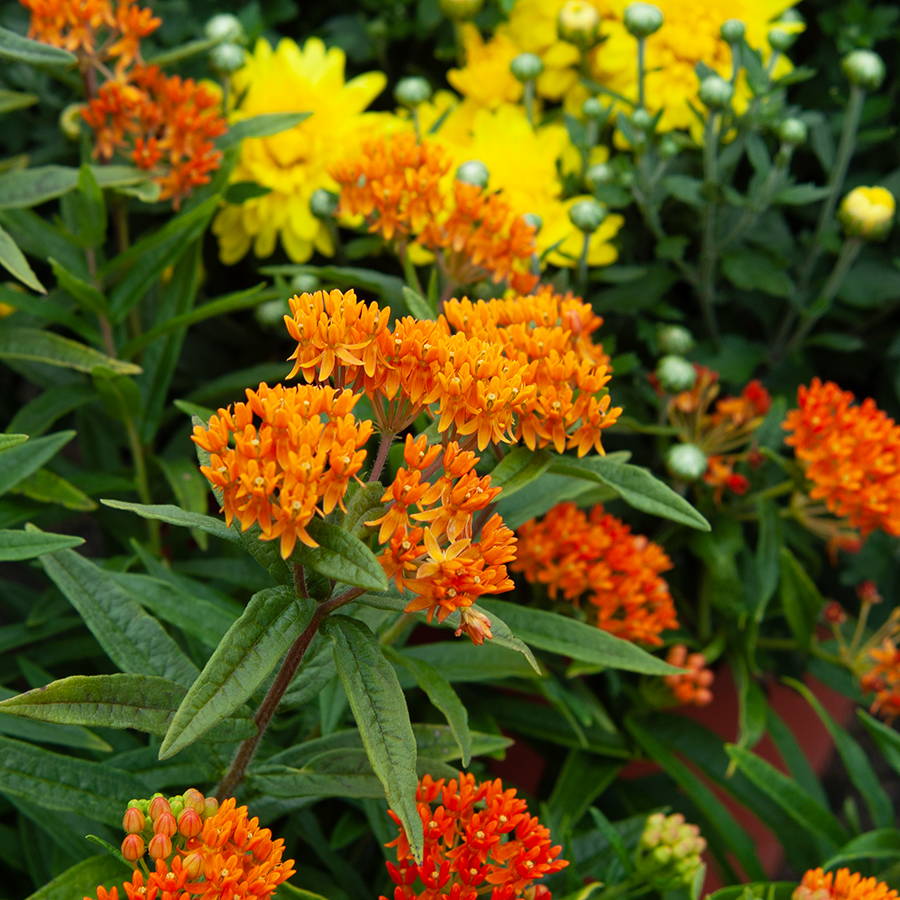Why Pollinators Love Milkweed (& Why You Should Too)
Milkweed (Asclepias) is a native perennial featuring colorful flower clusters and sturdy stems that grow naturally in prairie lands and woodland areas. These plants are hardy perennials heavily laden with nectar, creating a buffet for pollinators like butterflies, serving as the sole host plant to the monarch caterpillar. While this is a mighty task for a small perennial, milkweed gets it done and adds pollinator value beyond supporting the monarch population. Perennial gardeners and pollinator enthusiasts alike also adore the distinct flower clusters! Here, we'll discuss the importance of milkweed to the monarch population and why gardeners love growing this care-free perennial.
Supporting The Monarch Butterflies
Milkweed is the sole host plant to a monarch caterpillar meaning we need milkweed to have monarchs! This native wildflower can be found naturally in prairies and meadows, evolving alongside butterflies to develop relationships critical to our environment. Monarch caterpillars feed exclusively on milkweed leaves, while adult monarchs feast upon the nectar-filled florets, giving them ample energy to reproduce in the Eastern U.S. and Canada during the warmer months. In return, milkweed continues to spread via seed dispersal through wind pollination. And with about 35 percent of the world's food crops depend on animal and insect pollinators to reproduce, it's clear to see how vital it is that resources are abundant for these important creatures.
Loss of habitat in croplands and pesticide use have dwindled milkweed plants and other nectar resources, putting monarchs in a vulnerable position. According to a U.S. Geological Survey study, 3.62 billion milkweed stems are needed to reestablish this monarch population, but only 1.34 billion stems remain in the U.S. But there is still time to make a difference; spread the word and begin planting more milkweed and other pollinator plants to fight for the monarchs!
Adored By Bees & Birds
Milkweed isn't just an essential plant in the monarch butterfly lifecycle; many other native insects like honeybees, moths, and hummingbirds can't get enough of the colorful florets heavily laden with nectar that arrives two years after planting. Ample flower clusters emerge in late spring and continue blooming prolifically through the end of summer, providing a long-lasting food source when our pollinators need it most! The thick green foliage stays sturdy, leaving plenty of leaves for monarch caterpillars to feast upon.
But it's not just the nectar and leaves that pollinators love; after blooming through the summer, spent flowers turn into large seed pods in the fall. Birds like American tree sparrows and finches adore these seed pods. The seed pods are surrounded by tufts of wispy hair that aid in wind pollination and help grow more milkweed plants.
Durable, Beautiful & Easy To Grow
Milkweed doesn't just put in the work to support pollinators; it does so all while being incredibly low-maintenance, disease-resistant, adaptable, and drought-tolerant for gardeners too! While we naturally see milkweed growing in meadows or woodland areas, this powerful perennial looks fabulous in nearly any sunny garden as long as it's planted in well-drained soil. We love seeing this powerful perennial surrounded by other sun-loving plants like coneflower, bee balm, and aster. While your garden will buzz with bees and butterflies, deer tend to avoid them, so you won't have to worry about them damaging your milkweed plants. So sit back, relax, and admire the gorgeous flower clusters that helped make your garden a pollinator sanctuary.
Shop Milkweed Plants For Sale:
If you have questions, let us know! Comment your questions below or reach out through our contact us page. We have a team of horticulturalists who are here to help!



